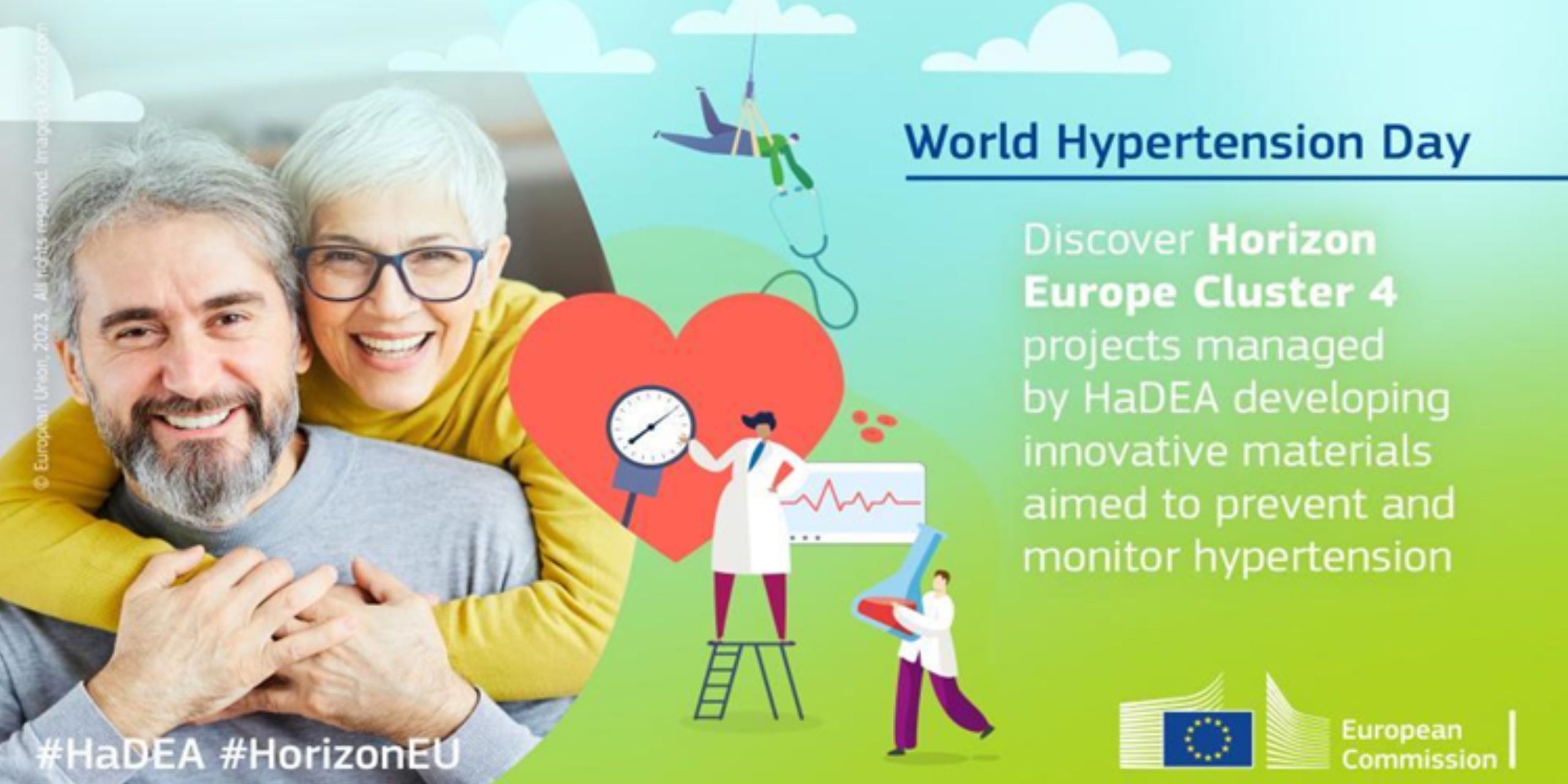World Hypertension Day, celebrated on 17 May, is dedicated to raise awareness and to promote the prevention and monitoring of blood pressure. Hypertension affects more than one billion people worldwide, being a leading cause of premature death and cardiovascular disease.
Under the Horizon Europe programme, HaDEA manages projects that concentrate their efforts on developing innovative approaches to prevent and manage hypertension and related health problems, as well as to enhance overall cardiac health.
Find out more about these projects:
SMARTSHAPE is formulating a new biomaterial – a temperature-dependent shape memory polymer (SMP). SMPs make it possible to develop a microsensor that can be curled-up and inserted into the body, using minimally invasive techniques, that unfolds to a predetermined shape when it reaches body temperature. This innovation provides a medical-grade, user-friendly, and minimally invasive solution for continuous and long-term monitoring of high blood pressure. The project also explores the applicability of SMP in different body environments, such as measuring intraocular or intracranial pressure.
ELR-SCAR project aims to create a new biomaterial, an elastin-like recombinant (ELR) hydrogel, to prevent the formation of scar tissue following episodes of myocardial infarction (MI). The ELR hydrogel is designed to selectively adhere to the endocardium, acting as a barrier against the development of scar tissue. It has high specificity to the ischemic microenvironment and can safely degrade in the body due to its enhanced biodegradability.
REBORN seeks to create a cardiac patch using smart and multifunctional biomaterials (electrospun piezoelectric fibres) to promote a functional heart tissue remodelling. The patch will be an “off-the-shelf” product that can be applied through a minimally invasive intervention in patients who have undergone percutaneous coronary intervention after experiencing MI. The device is expected to reduce the risk of heart failure in patients who survive acute MI, improving their quality of life and decreasing mortality rates.
Source: European Commission | European Health and Digital Executive Agency (HaDEA) (https://bit.ly/41XGjvP)
